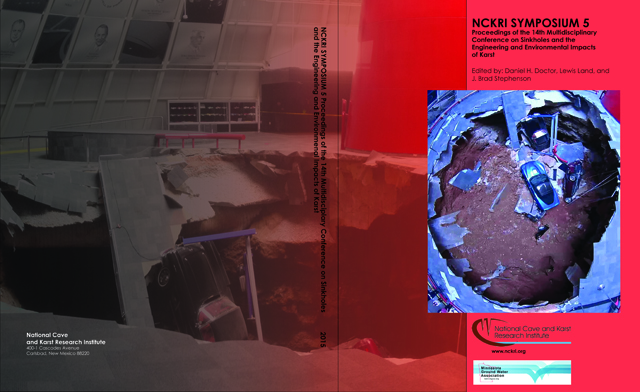Abstract
Extensive foundation preparations during construction of the Wolf Creek Dam concrete masonry section precluded the need for additional rehabilitation to mitigate seepage through karstic limestone bedrock. Wolf Creek Dam on the Cumberland River in southern Kentucky has become well known for karst related seepage issues underneath the embankment section, and yet has had little to no seepage issues associated with the concrete masonry portion of the dam. Post-construction efforts to control seepage underneath the embankment began in 1967 and 1968. Emergency grouting commenced and continued through 1970. Between 1975 and 1979 a more permanent solution of a concrete diaphragm cut-off wall was constructed through the centerline of the left portion of the embankment section down to competent bedrock. The wall interrupted the progression of foundation erosion, but post construction monitoring, instrumentation readings, and persistent wet areas downstream showed that seepage paths under or around the wall continued. A second cut-off wall upstream of the first was constructed between 2007 and 2013, extending nearly the entire length of the embankment and up to 75 feet (22.9 m) deeper than the original wall. Cost of the second wall and other concurrent rehabilitation efforts reached nearly $600 million. Exploratory grouting beneath the concrete masonry section of the dam in 2012 resulted in low grout volume takes, so no further remediation efforts below the masonry dam were conducted. The original construction photographs and foundation reports for the concrete masonry section of Wolf Creek Dam instill confidence that the designers and builders of the monoliths took adequate, if not excessive measures to ensure that all the monoliths were founded on competent bedrock. These measures included extensive borehole investigations both prior to and during excavation, efforts to locate, delineate, remove, and clean all karst solution channels, the removal of all loose rock, grouting in the foundation and side vertical faces, large stair-step faces on the left abutment, extended excavations to remove soft beds, final manual cleaning of rock surfaces, and the careful documentation of foundation preparations. These measures do not guarantee that seepage issues will not develop under the concrete dam over time, but they do show with reasonable certainty that the monoliths were originally founded on competent bedrock, and that future seepage issues are either unlikely or will be significantly inhibited by the preparation made to the foundation prior to the construction of the concrete monoliths.
Rights Information
DOI
http://dx.doi.org/10.5038/9780991000951.1067
Included in
Successful Foundation Preparations in Karst Bedrock of the Masonry Section of Wolf Creek Dam
Extensive foundation preparations during construction of the Wolf Creek Dam concrete masonry section precluded the need for additional rehabilitation to mitigate seepage through karstic limestone bedrock. Wolf Creek Dam on the Cumberland River in southern Kentucky has become well known for karst related seepage issues underneath the embankment section, and yet has had little to no seepage issues associated with the concrete masonry portion of the dam. Post-construction efforts to control seepage underneath the embankment began in 1967 and 1968. Emergency grouting commenced and continued through 1970. Between 1975 and 1979 a more permanent solution of a concrete diaphragm cut-off wall was constructed through the centerline of the left portion of the embankment section down to competent bedrock. The wall interrupted the progression of foundation erosion, but post construction monitoring, instrumentation readings, and persistent wet areas downstream showed that seepage paths under or around the wall continued. A second cut-off wall upstream of the first was constructed between 2007 and 2013, extending nearly the entire length of the embankment and up to 75 feet (22.9 m) deeper than the original wall. Cost of the second wall and other concurrent rehabilitation efforts reached nearly $600 million. Exploratory grouting beneath the concrete masonry section of the dam in 2012 resulted in low grout volume takes, so no further remediation efforts below the masonry dam were conducted. The original construction photographs and foundation reports for the concrete masonry section of Wolf Creek Dam instill confidence that the designers and builders of the monoliths took adequate, if not excessive measures to ensure that all the monoliths were founded on competent bedrock. These measures included extensive borehole investigations both prior to and during excavation, efforts to locate, delineate, remove, and clean all karst solution channels, the removal of all loose rock, grouting in the foundation and side vertical faces, large stair-step faces on the left abutment, extended excavations to remove soft beds, final manual cleaning of rock surfaces, and the careful documentation of foundation preparations. These measures do not guarantee that seepage issues will not develop under the concrete dam over time, but they do show with reasonable certainty that the monoliths were originally founded on competent bedrock, and that future seepage issues are either unlikely or will be significantly inhibited by the preparation made to the foundation prior to the construction of the concrete monoliths.

